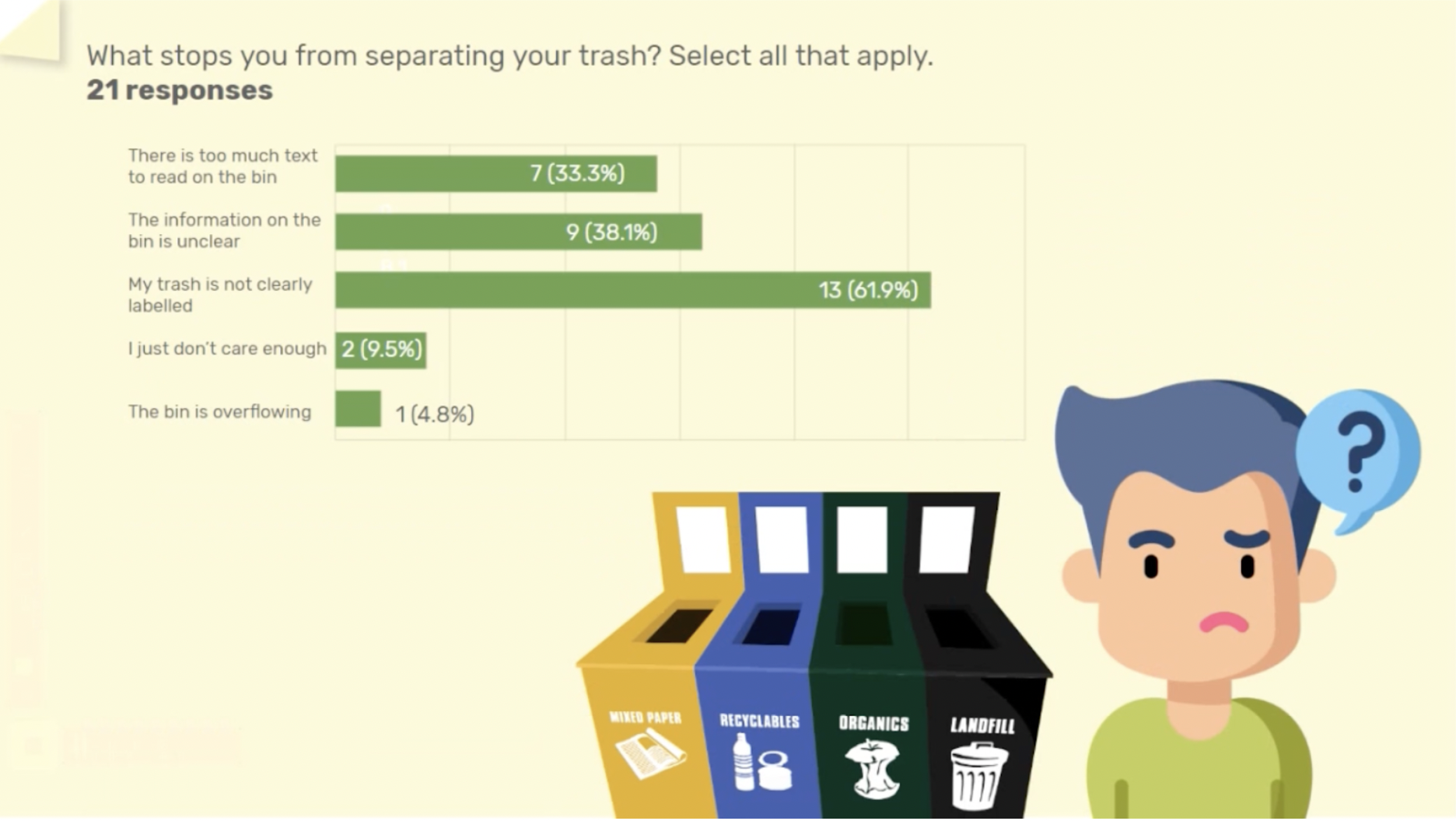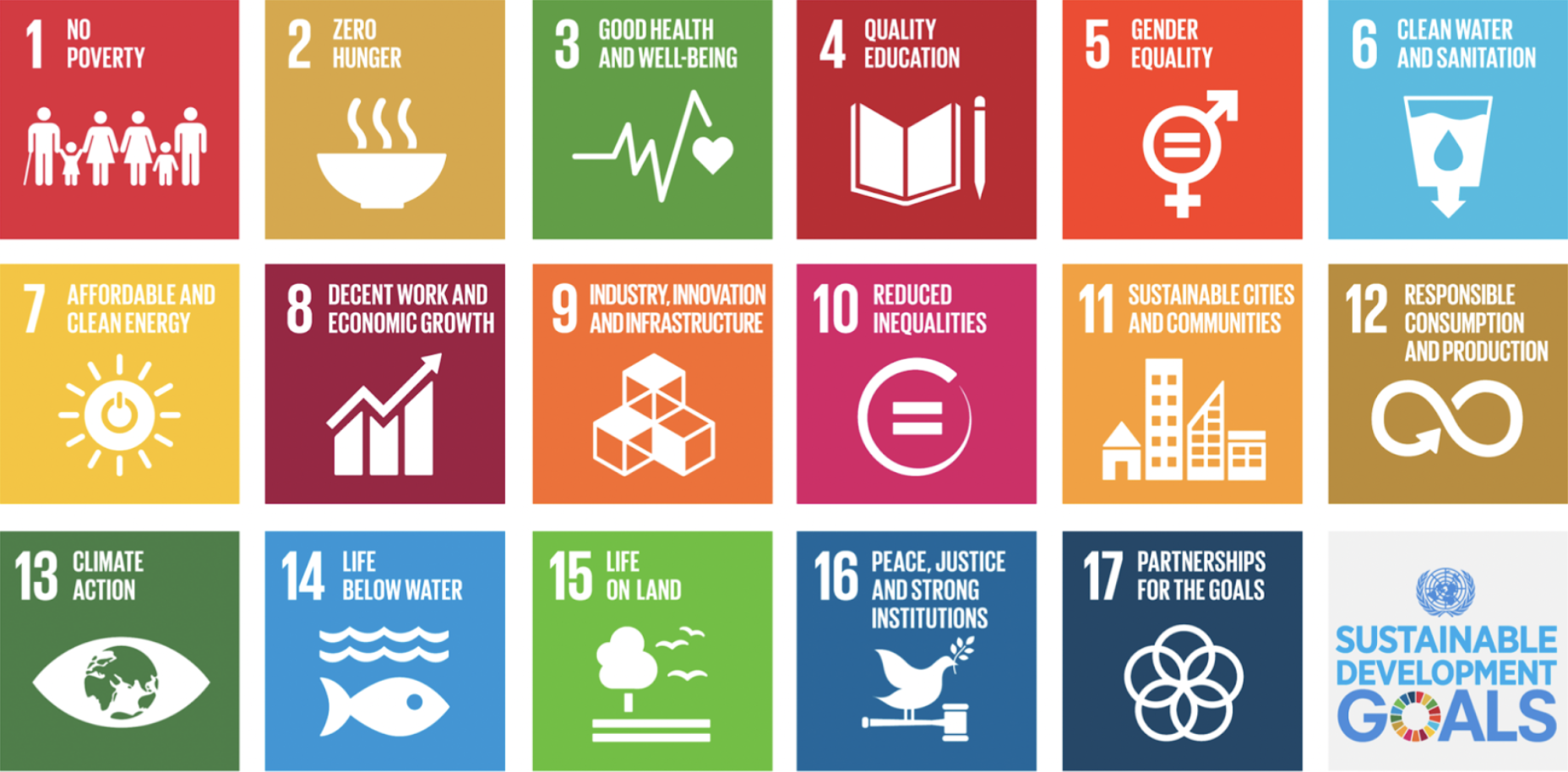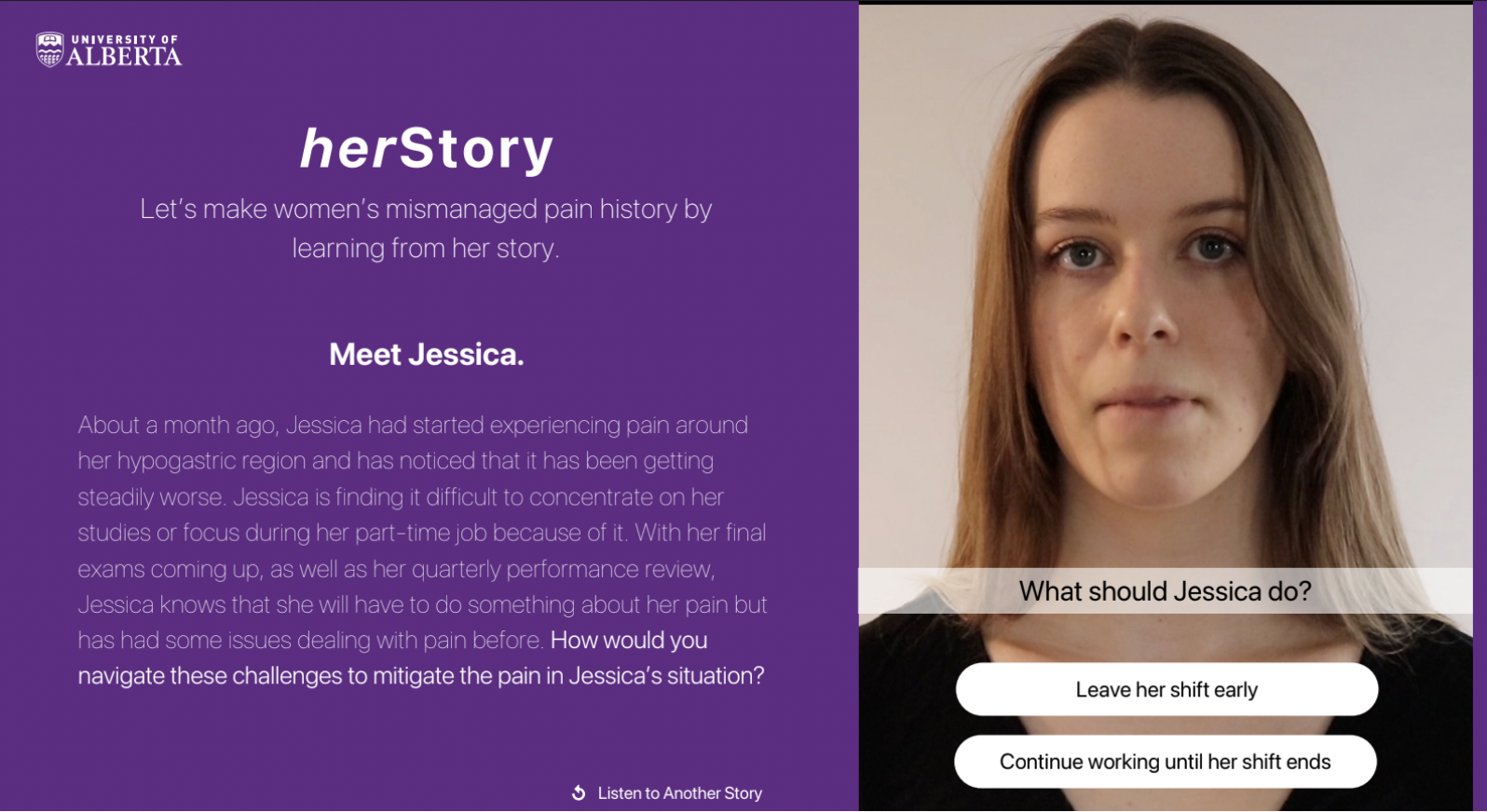UN SDGs help students prototype thoughtful, sustainable industrial designs
They prototyped concepts for a colour-coded sticker system to help customers find the proper bins for waste and recycling from Students Union Building restaurants. They drew up designs for a booth through which Edmonton Remand Centre inmates could safely communicate with the outside world. They made culture-appropriate sex education brochures for Nigerian women, to name a few.

A screenshot from DES 401 sustainable design project by Alysha Ross, Brennan Lee and Tahsina Ahmed illustrating the common barriers to correctly separating waste at the Students Union Building.
Instructor Ben King said that although his students’ impressive projects are likely a combination of hard work and creativity, one of the most helpful tools for generating new ideas is the United Nations (UN) Sustainable Development Goals (SDGs).
“From an educator perspective, they’re an amazing resource because they provide all the secondary research you need as a starting point to frame your project, and there’s a plethora of directions students can go in,” King said.
Launched by the UN in 2015, the SDGs are 17 interconnected targets for “achieving a better and more sustainable future for all.” They aim to improve environmental, social, economic and cultural sustainability by 2030.

The goals are introduced early in DES 401, a course that is focused on research methods, communication skills, and the psychology of design, and that King said “transitions students from ‘makers’ to ‘decision makers.’”
“The goals have so many different indicators that are useful for giving students a bullseye within a project,” King said. “I’ve even seen students tackle marine life stuff by designing something for the fishing industry in B.C..”
Tackling the SDGs
Sustainability is woven throughout DES 401, but students are also tasked with completing a design project focused on a sustainability problem.
Travis Erickson is a graduate of the U of A’s Bachelor of Design (BDes) program who completed a Certificate in Sustainability. His DES 401 group focused on SDGs nine (industry, innovation and infrastructure) and 11 (sustainable cities and communities) by prototyping a phone app that teaches the history of substantially-renovated city buildings. The project was inspired by renovations to the HUB Mall’s roof.
“The renovations really changed the building and got us thinking about how we preserve these cool pieces of history in buildings that are still standing even if they’ve changed,” Erickson said.
In the prototype, passers-by could scan a QR code on their phones that would open an interactive menu with photos and other information about the building.
“It’s basically a low-barrier and low-cost option to having actual kiosks,” Erickson said.
Erickson was familiar with the SDGs before taking DES 401, but he views them as a vital part of the course, and he said they are something he will consider for any design-related work he does in the future.
“If I were to go into the class without any prior knowledge, it would have helped me to see the diversity within the goals,” he said. “At a distance they can seem solely environmental, but they have a lot of breadth.”
That breadth is what Carlos Jarquin, a fourth-year BDes student, found useful when his group was sharpening the focus of their project, which tackled SDGs three (good health and wellbeing) and five (gender equality).
Jarquin and his groupmates designed a digital “choose your own adventure” to help healthcare professionals and other interested groups understand the barriers women face when their physical pain isn’t taken seriously.
Viewers could navigate through video-recorded stories, played by actors but based on the true accounts of several women, and make choices that affect whether the women receive proper treatment. One story, for example, focused on a student’s choice to work part time and pay for necessities or miss work to see a doctor.

A screenshot from DES 401 sustainable design project by Taylor Carlin, Emilie Davis and Carlos Jarquin showcasing their pain management choose your own adventure.
Jarquin said that going through the SDGs helped his group find the sustainability topics that they cared about most deeply.
“Growing up my parents had to flee from Nicaragua due to a revolution, and they had quite a bit of difficulty navigating Canadian healthcare,” he said. “There were barriers that prevented them from getting the care that they required or understanding how to improve their wellbeing. Those disparities in healthcare are something that as a designer I want to help prevent.”
Above all else, the interdisciplinary and interconnected nature of the goals makes them ideal for solving design challenges, Jarquin said.
“They are a collective source of knowledge to approach sustainability problems, but they also show that you need multiple perspectives,” he said. “You can’t just approach them from a design or engineering perspective, or a hard science perspective; you need multiple sources of information to be able to approach them.”
Finding the human element
King encourages students in DES 401 to pick up the phone, write emails and make connections with community members, researchers and industry to hear firsthand the problems different groups face and learn how those problems can be solved with good design.
It’s all part of the course’s foundational philosophy: “think global, act local” — a motto for inspiring students to see how global issues touch their own backyards and finding fixes that work for unique, regional contexts.
“Your research will be less significant if you’re just basing it off a Google Scholar search, and there’s also a danger of ethnocentrism and thinking you know someone’s experience when you really don’t,” King said.
“A lot of interaction with designers is very tool-focused, whether that’s building something in the shop, animating something, or building a website. Those are the tools we use to communicate our ideas. We want to emphasize the human element vs. the data-driven or tech-driven approach. We want to learn about people as much as possible before making assumptions about what they want.”
King has found that the SDGs can be especially useful for identifying the human element within a design problem.
He said, “For any academic streams that are interested in learning about people or making things, the SDGs are a great thing to incorporate into your course.”

DES 401 Instructor Ben King